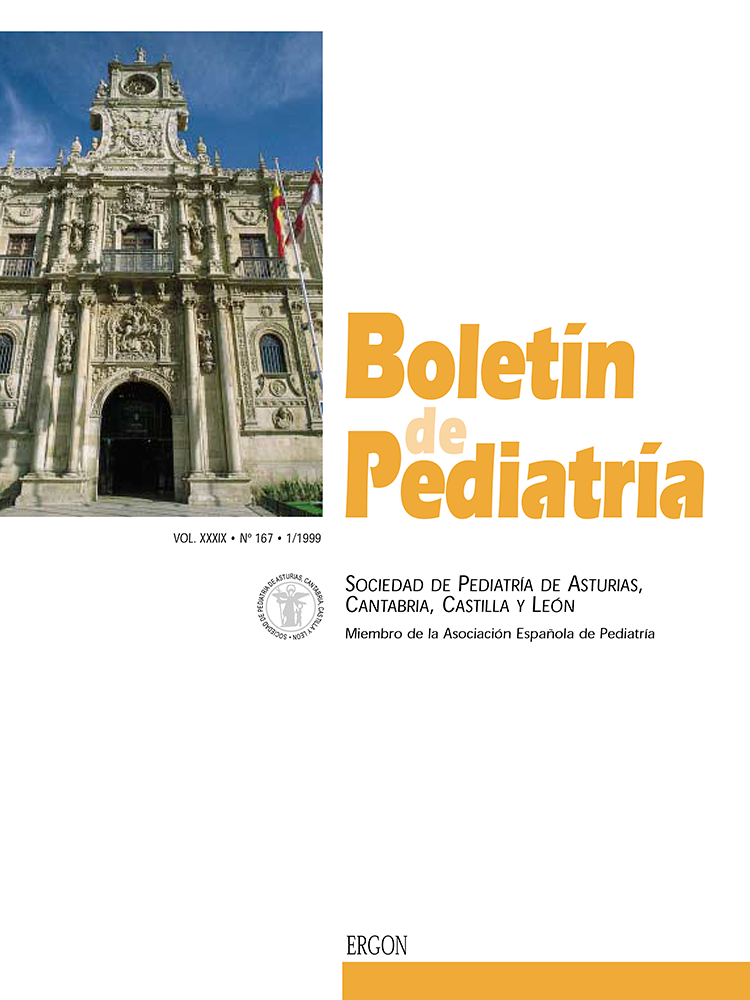Abstract
Objective: Describe the clinical characteristics and laboratory findings of a trichinosis outbreak in Cantabria and its 5-year evolution. Patients and Methods: A prospective study of children under 14 years of age, who were affected by this epidemic outbreak, was performed. Results: In January 1993, 6 children were hospitalized due to trichinosis. The mean age was 9.8 years (range 6.2-13.3). The mean time of onset of symptoms was 30.5 days (range 21-42). All of the patients had eaten wild boar meat. The predominant clinical manifestations were: diarrhea (83.3%), abdominal pain and fever (66.7%), headache, facial edema and exanthema (50%). The most significant analytic data were: eosinophilia (100%) and high LDH serum levels (100%), CK (83.3%) and IgE (50%). The 6 children had antibodies against Trichinella spiralis and 4 also presented positive serology to Fasciola hepatica. The eosinophilia disappeared before 10 weeks. The LDH and CK enzymes normalized by 6 months, except in one case (14 months). The serology to Fasciola became negative by 4 months. All of the children were treated with mebendazol with good evolution; they remained asymptomatic at the end of 5 years. Conclusions: a) Trichinosis is a rare disease but it must be considered when the patient has fever, gastrointestinal symptoms, exanthema, facial edema and eosinophilia, even if there is no myalgia. b) We ignore if there is any relationship between infestation by Trichinella spiralis and the appearance of antibodies against Fasciola hepatica.

This work is licensed under a Creative Commons Attribution-NonCommercial 4.0 International License.
Copyright (c) 1999 Boletín de Pediatría
